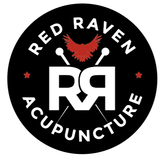Acupuncture is an Ancient practice used throughout East Asia for thousands of years. It is hardly a monolith, and there are literally dozens of approaches. Below are some explanations of the specific techniques used in our clinic. For a further discussion on Traditional Chinese and East Asian Medicine, check out our FAQ here.
Dry Needling or 'Trigger Point' Acupuncture
Dry Needling is a form of acupuncture where we use the trigger point, or 'motor point' of the muscle to create a spasm, or noticeable twitch using an acupuncture needle. This approach is used by many practitioners including Acupuncturists, Chiropractors, and Physical Therapists. The idea is that the twitch is a 'reset' for the muscle if you will. Tight muscles that have been overworked will spasm and then relax, but weak muscles that aren't performing as well as they should can 'wake up' and begin to perform their functions more effectively. It can provide almost immediate pain relief and return of function. This is particularly useful for sports injuries and pain management, but almost everyone has inhibited muscles not firing correctly, that can benefit from this approach.
The elicited twitch is not so much painful but just odd having your muscle move involuntarily. Often a single spasm can achieve the desired results. Some practitioners believe repeated twitches create a more immediate effect, but this can be a very painful experience and cause damage to the muscle. At Red Raven we believe a gentler approach to be much more beneficial to most patients. If you have experienced this approach, please reach out to our clinic as our practitioners have received extensive training (over 900 hours of clinical practice) which can be noticeably felt in the gentleness and ease of a successful treatment.
The elicited twitch is not so much painful but just odd having your muscle move involuntarily. Often a single spasm can achieve the desired results. Some practitioners believe repeated twitches create a more immediate effect, but this can be a very painful experience and cause damage to the muscle. At Red Raven we believe a gentler approach to be much more beneficial to most patients. If you have experienced this approach, please reach out to our clinic as our practitioners have received extensive training (over 900 hours of clinical practice) which can be noticeably felt in the gentleness and ease of a successful treatment.
Ear Acupuncture
Ear, or Auricular Acupuncture is extremely powerful. The ear is a considered a microcosm, or like a tiny model, of the body. It is thought to have a slightly more direct effect on the nervous system making it especially useful for addiction, recovery, mental health, pain management, and insomnia. This approach is particularly beneficial for PTSD and trauma treatments because it does not require much physical contact, or discussion of specific histories. It has in fact been used in many community outreach programs, veteran and active duty military programs, and has a rich history with the Black Panthers who were critical in bringing acupuncture to the people of the US.
'Warm Needle' Acupuncture
The warm part of warm needle is moxibustion, or mugwort. Specially processed threads from the Artemisia plant are rolled into balls and placed on the end of the needle, then burned. The pleasant heat sensation travels down the needle and into the muscle or tissue. When paired with trigger point or dry needle acupuncture, it is extremely effective for relieving pain and restoring functions to the muscles.
Tung Acupuncture
Tung Acupuncture is a special set of points passed down from practitioner to practitioner. Master Tung realized that unless he did something, this point set and unique approach to qi could be lost forever. He codified the points with many students across the globe and a number or books were published with the information. He was extremely successful and today there are thousands of people practicing Tung Acupuncture. It has an extremely vast treatment list, equal to that of modern acupuncture approaches, but is especially useful for pain management and recovery.
Japanese Acupuncture
Japanese Acupuncture has two distinct tenets that differentiate it from Traditional Chinese Medicine. The first is that much smaller needles are used and the insertions are much gentler, almost imperceptible at times. You don't even know your Acupuncturist has put a needle in! The second tenet is that there is a much larger focus placed on palpation. Whether it's palpation to find a specific point on the channel, or to detect pain or sensitivity in other regions of the body, much more importance is placed on the ability to distinguish differences in the tissue with more intricacy than other approaches.
Disclaimer: All countries approaches to Acupuncture are complex and varied, this is hardly an extensive list of what makes Japanese Acupuncture special, but rather what our clinic specializes in in regards to treatment plans.
Disclaimer: All countries approaches to Acupuncture are complex and varied, this is hardly an extensive list of what makes Japanese Acupuncture special, but rather what our clinic specializes in in regards to treatment plans.
Non-Insertion & Pediatric Acupuncture
Pediatric Acupuncture using non-insertive techniques stems from a union of Chinese massage therapy, or Tuina, with Japanese tools like a teishin. These palpation techniques and tools are used in tandem to activate channels and points. This is an extremely gentle, yet effective treatment for children. Since they have so much energy, it does not take strong interventions such as needle insertion to achieve similar results to adult acupuncture.
* Individual results vary. No guarantee of specific results is warranted or implied and your results will depend on many factors (full disclaimer).
